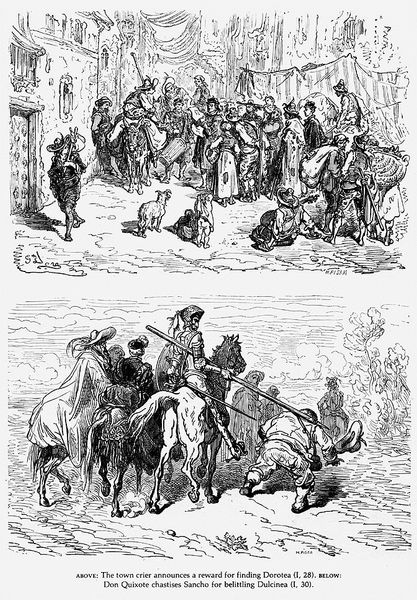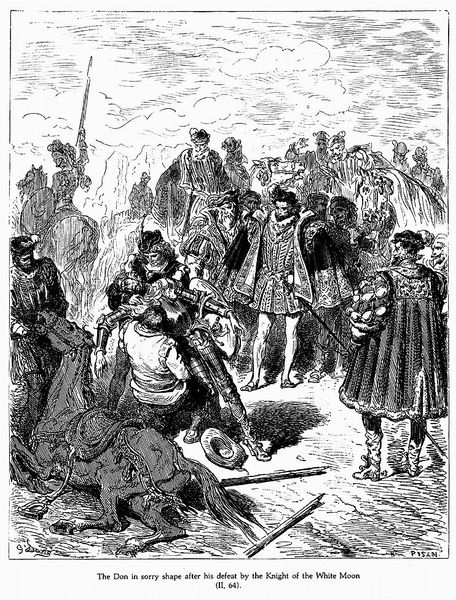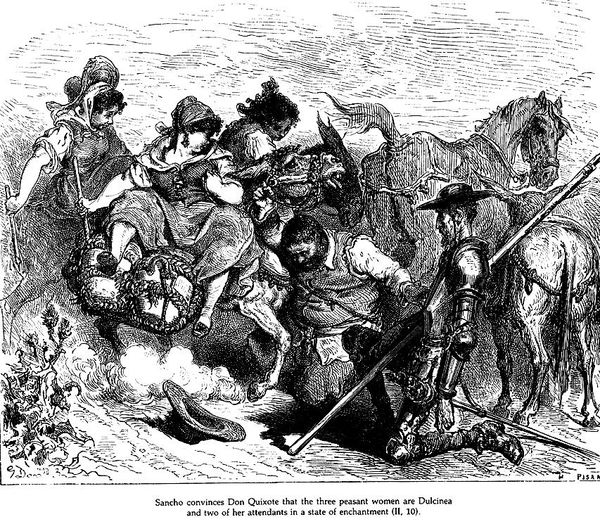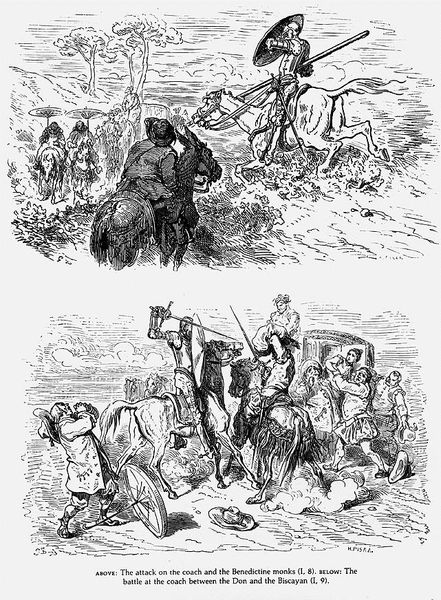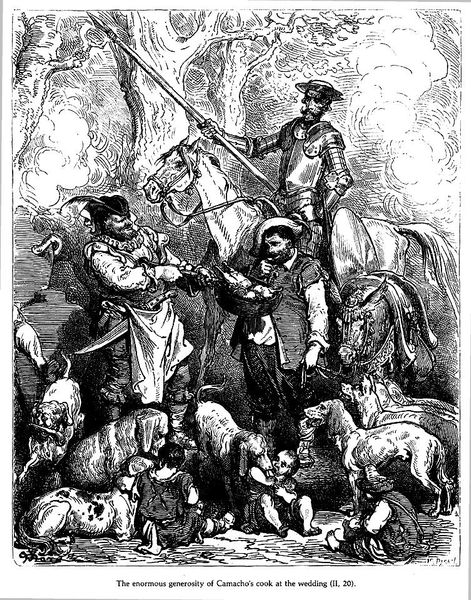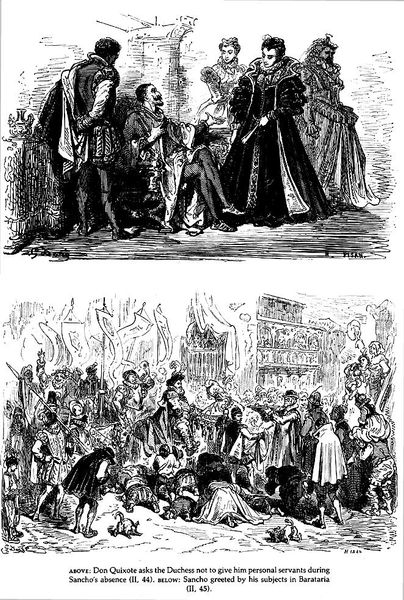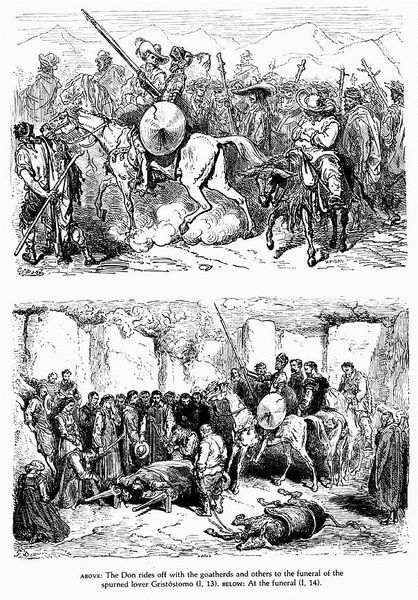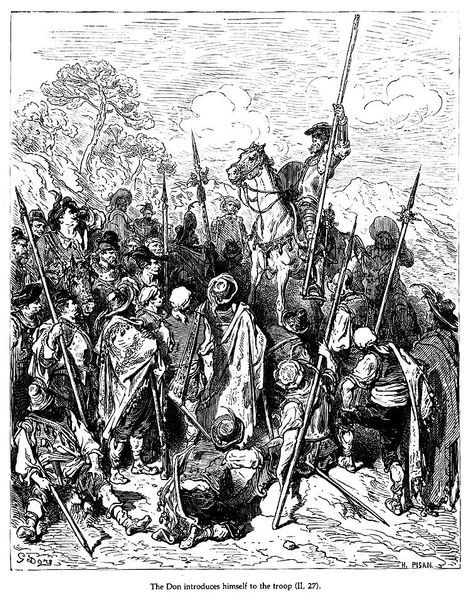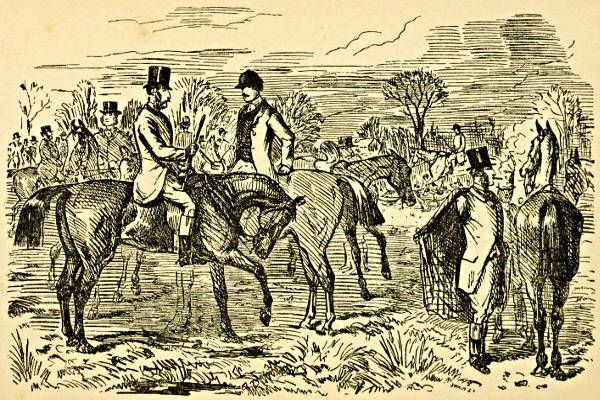
drawing, paper, ink, engraving
#
portrait
#
drawing
#
narrative-art
#
landscape
#
figuration
#
paper
#
ink
#
romanticism
#
horse
#
genre-painting
#
history-painting
#
engraving
Copyright: Public domain
Gustave Doré created this illustration, "Don Quixote," using wood engraving, marked by its stark contrasts and intricate linework. The dual-scene composition, divided horizontally, presents distinct narrative moments. Above, a sparse landscape sets the stage for a fencing match between two students, the figures rendered with bold, dark lines against the lighter backdrop. Below, the scene bursts with energy as musicians travel to Camacho's wedding. The density of figures and objects creates a sense of lively chaos. Doré masterfully employs line to define form and texture, using hatching and cross-hatching to suggest volume and shadow. The composition’s contrasting densities reflect the novel's thematic shifts between individual folly and communal festivity. In its visual structure, the artwork mirrors the novel's own blend of high and low, serious and comic, inviting us to consider how these formal elements contribute to our understanding of Cervantes' enduring narrative. Doré’s graphic choices underscore the story's rich interplay between idealism and reality, emphasizing the structural parallels between visual and literary form.
Comments
No comments
Be the first to comment and join the conversation on the ultimate creative platform.
